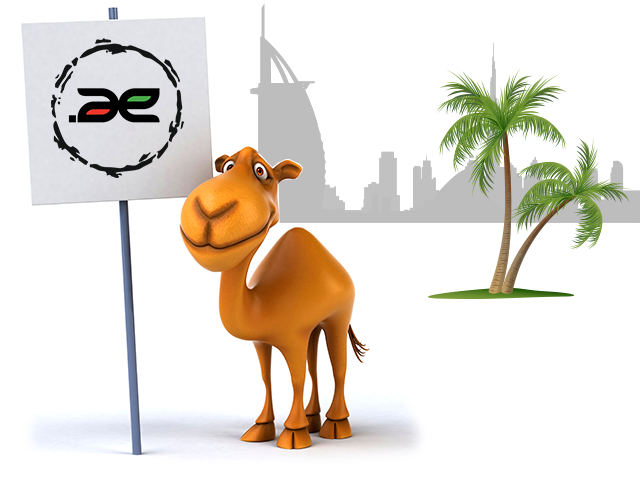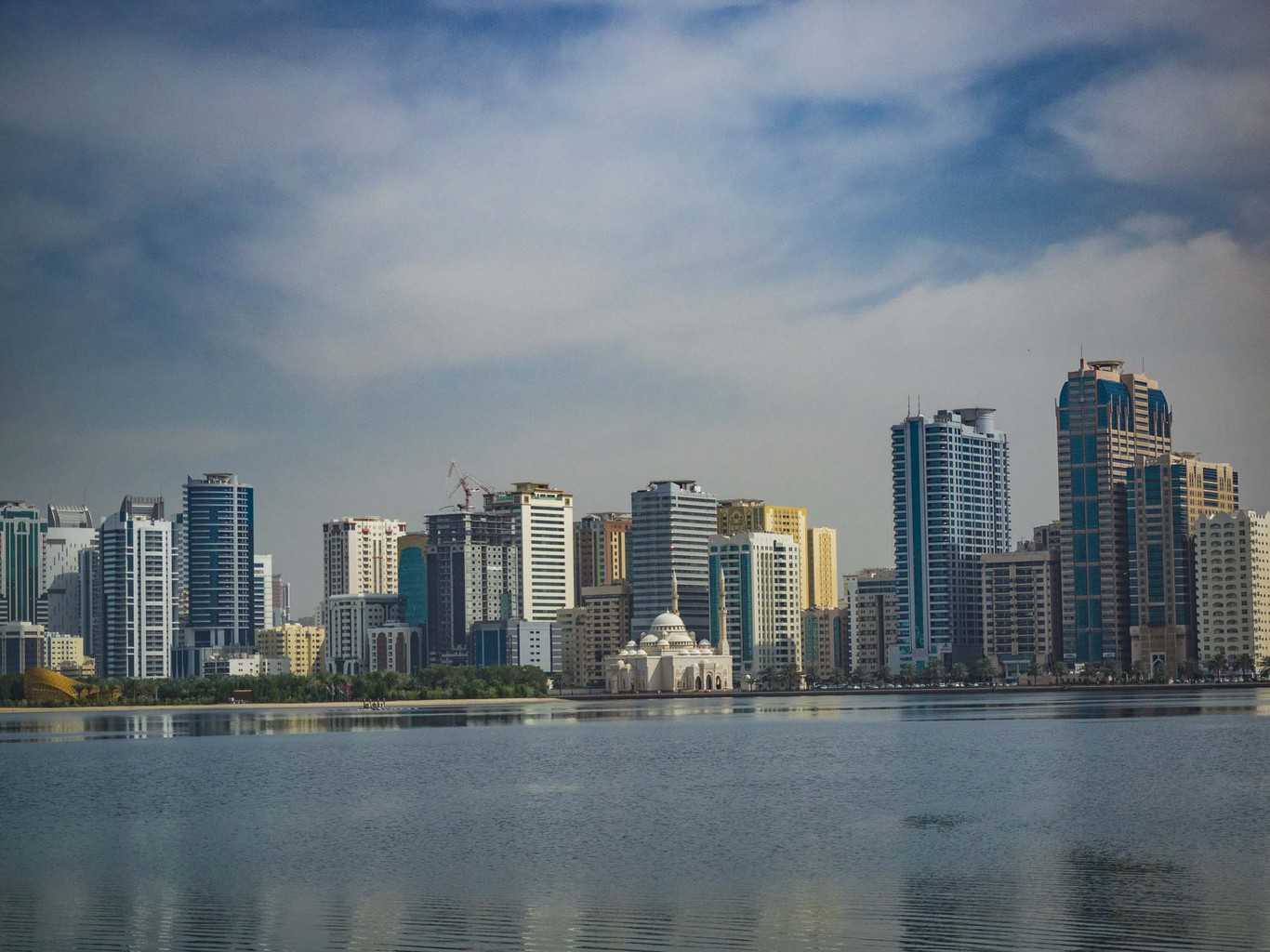The United Arab Emirates is a country that is made up of seven emirates. Those are Abu Dhabi, Dubai, Sharjah, Ajman, Fujairah, Ras al-Khaimah, and Umm al-Qaiwain. While the country as a whole has a prime minister and federal president, each emirate has its own ruler that oversees the local governments. The UAE was established in 1971, and since that time, it has seen great population growth. Its largest city is Dubai, which has reached the one million resident milestone with a population of 1.1 million. However, there are other cities within the UAE that have high population counts.
The second most populous city, Abu Dhabi, has over 600,000 residents. There are four additional cities with populations that have surpassed 100,000. Seven cities have populations that are between 10,000 and 100,000, while remaining cities and towns make up the remainder of the population. Since then, the UAE has been a sovereign nation, enjoying the profits of its natural resources—its reserves of oil and natural gas are the seventh-largest in the world, and it has the seventh-highest GDP per capita. This wealth has turned the Emirates into a major hub of trade, travel, tourism and finance.
Dubai's Burj Khalifa, the tallest structure in the world, is emblematic of the Emirates' dramatic construction boom and rise to global prominence. Dubai is the most populous and the largest emirate in the UAE with approximately 2,502,715 people. Notably, it is the most progressive emirate among the seven emirates. Dubai is classified as an alpha city due to its strong economy. Despite being a desert, the country has managed to utilize its resources and according to the 2015 statistics, it has an annual GDP of 105.6 billion USD.
Unlike its neighboring emirates such as Abu Dhabi, the oil reserves of Dubai have been exhausted; oil contributes only 2 % of the total GDP of this emirate. Although it started as a port, Dubai has developed into a luxurious emirate that is home to the world's tallest building. The UAE has developed from a juxtaposition of Bedouin tribes to one of the world's most wealthy states in only about 50 years. Between 2000 and 2018, average real gross domestic product growth was at close to 4%. It is the second largest economy in the GCC , with a nominal gross domestic product of US$414.2 billion, and a real GDP of 392.8 billion constant 2010 USD in 2018. Since its independence in 1971, the UAE's economy has grown by nearly 231 times to 1.45 trillion AED in 2013.
The non-oil trade has grown to 1.2 trillion AED, a growth by around 28 times from 1981 to 2012. Backed by the world's seventh-largest oil deposits, and thanks to considerate investments combined with decided economic liberalism and firm Government control, the UAE has seen their real GDP more than triple in the last four decades. Nowadays the UAE is one of the world's richest countries, with GDP per capita almost 80% higher than OECD average. Emirati employers reportedly prefer international graduates over graduates of local private institutions.
Some employers also sponsor students' overseas study in fields like engineering with funds and job offers upon graduation. The education system through secondary level is monitored by the Ministry of Education in all emirates except Abu Dhabi, where it falls under the authority of the Abu Dhabi Education Council. It consists of primary schools, middle schools and high schools.
The public schools are government-funded and the curriculum is created to match the United Arab Emirates' development goals. The medium of instruction in the public school is Arabic with emphasis on English as a second language. There are also many private schools which are internationally accredited. Public schools in the country are free for citizens of the UAE, while the fees for private schools vary.
Human occupation has been traced back to the emergence of anatomically modern humans from Africa some 124,000 BCE through finds at the Faya-2 site in Mleiha, Sharjah. Burial sites dating back to the Neolithic Age and the Bronze Age include the oldest known such inland site at Jebel Buhais. Known as Magan to the Sumerians, the area was home to a prosperous Bronze Age trading culture during the Umm Al Nar period which traded between the Indus Valley, Bahrain and Mesopotamia as well as Iran, Bactria and the Levant. The ensuing Wadi Suq period and three Iron Ages saw the emergence of nomadism as well as the development of water management and irrigation systems supporting human settlement in both the coast and interior. The Islamic age of the UAE dates back to the expulsion of the Sasanians and the subsequent Battle of Dibba.
The UAE' history of trade led to the emergence of Julfar, in the present-day emirate of Ras Al Khaimah, as a regional trading and maritime hub in the area. The maritime dominance of the Persian Gulf by Emirati traders led to conflicts with European powers, including the Portuguese Empire and the British Empire. Upon passing the final graduation examination at the end of grade 12, students are awarded the Secondary Technical School Certificate, a credential that qualifies students for tertiary education. At some institutions, such as technical secondary schools that Abu Dhabi's ACTVET oversees, students may also concurrently earn a recognized Australian vocational trade certificate. Since oil and gas reserves won't last forever, the Emirates, most notably Dubai, have pursued a systematic economic diversification strategy. Dubai is now the most important financial center and trading hub in the Middle East, going far beyond petrol capital.
The UAE now boasts an excellent infrastructure, logistics, and investor-friendly business environment. Sectors like foreign trade, tourism, and banking are expanding quickly. The real estate market has recently slowed, but over the past two decades, construction in major cities boomed to the extent that reportedly 2 percent of the world's cranes were in Dubai alone. The city is now endowed with a sparkling skyline of high-rise buildings and luxury hotels.
An independent country since 1971, the UAE is a federation of seven hereditary monarchies or emirates that, combined, is smaller than the U.S. state of Maine. The most populous of these emirates is currently Dubai—a sprawling global city whose cosmopolitan resident population has more than doubled since 2006. Sometimes referred to as "Hong Kong in the desert," Dubai is now home to nearly three million people. It has the world's tallest building and one of the busiest airports on the globe.
About 37 percent of Dubai's residents come from India and Pakistan; native Emiratis make up only 8.2 percent of the population. Ras al-Khaimah is situated to the northern part of the UAE, bordering part of Oman's territory, the Musandam. The population of this emirate is 205,000 people, and the Emirati citizens are the largest group. Ras al-Khaimah does not have any oil, and it has, therefore, focused on advancing its industrial sector. The primary economic areas of Khaimah include real estate, tourism, building materials, service sector, and agriculture. The most recognized types of attraction in this emirate include shopping, nature, parks, water, and amusement parks.
The capital city of this emirate is also referred to as Ras al-Khaimah and it is a home to most of the citizens of Ras al-Khaimah emirate. The UAE's monetary policy stresses stability and predictability, as the Central Bank of the UAE keeps a peg to the US Dollar and moves interest rates close to the Federal Funds Rate. This policy makes sense in the current situation of global and regional economic and geopolitical uncertainty. In the mid- to long term, however, the peg will become less important, as the UAE transitions to a knowledge-based economy – and becomes yet more independent from the oil and gas sector . As impressive as economic growth has been in the UAE, the total population has increased from just around 550,000 in 1975 to close to 10 million in 2018. This growth is mainly due to the influx of foreign workers into the country, making the national population a minority.
The UAE features a unique labour market system, in which residence in the UAE is conditional on stringent visa rules. This system is a major advantage in terms of macroeconomic stability, as labour supply adjusts quickly to demand throughout economic business cycles. Islam is the official religion and Arabic is the official language.
The United Arab Emirates' oil and natural gas reserves are the world's sixth and seventh-largest, respectively. Zayed bin Sultan Al Nahyan, ruler of Abu Dhabi and the country's first president, oversaw the development of the Emirates by investing oil revenues into healthcare, education, and infrastructure. The United Arab Emirates has the most diversified economy among the members of the Gulf Cooperation Council. In the 21st century, the country has become less reliant on oil and gas, and is economically focusing on tourism and business.
The government does not levy income tax, although there is a corporate tax in place and a 5% value-added tax was established in 2018. Employment opportunities for highly skilled workers in its diversifying economy make the UAE an attractive study destination for students from other countries. The United Arab Emirates was formed in 1971 as a result of the union of seven monarchies.
Each emirate is led by a sheikh who is the absolute ruler ofhis state. In the late 1960's the ruler of Abu Dhabi, Sheikh Zayed bin Sultan Al Nahyan, proposed the creation of a federation consisting of the 7 emirates but Bahrain and Qatar were not yet independent. Negotiations eventually led to the independence of Bahrain and Qatar and the federation of seven emirates of the United Arab Emirates was complete with Ras al-Khaimah joining in 1972. As stated in their constitution, the individual emirates are politically, legally and economically autonomous. The Federal National Council operates solely as an advisory body.Abu Dhabi was initially the poorest emirate until it began to export oil in 1962 when it soon turned into the wealthiest sheikhdom. In 1966, Dubai, already flourishing with trade and services, finds oil in its subsoil.
Using the proceeds from Abu Dhabi's oil industry, Sheikh Zayed bin Sultan al-Nahyan adopted economic and social development policies that cemented support to the growth of all seven emirates. Apart from being the capital city, it is also the second largest emirate in the world with an approximate population of 1.6 million people. Abu Dhabi is classified as one of the wealthiest cities in the world with most of its revenue originating from petroleum products. This emirate accounts for approximately two-thirds of the UAE economy.
Unlike Dubai which is more Westernized, Abu Dhabi is more into cultural traditions. Abu Dhabi is also a major tourist attraction state where most people visit for cultural reasons such as to visit the Sheikh Zayed Mosque, have fun on the sandy beaches, visit the Yas Island and the famous Ferrari World Abu Dhabi. After joining forces, the UAE has grown to become a significant economic center in the Middle East. This exportation has led to a much-diversified economy making most of the seven emirates such as Dubai to transform into global hubs for retail, finance, and tourism.
Annually, each emirate allocates a certain percentage of their revenue to the central budget of the UAE. The seven emirates have developed differently over the last decade as described below. The states gained autonomy following World War II (1939–45), when the trucial states of Bahrain and Qatar declared independent statehood. The rest were formally united in 1971, with the city of Abu Dhabi serving as the capital. The UAE leadership has driven forward economic diversification efforts already before the oil price crash in the 1980s, and the UAE is nowadays the most diversified economy in the Middle East and North Africa region. Although the oil and gas sector does still play an important role in the UAE economy, these efforts have paid off in terms of great resilience during periods of oil price fluctuations and economic turbulence.
In 2018, the oil and gas sector contributed 26% to overall GDP. While the government may still adjust the exact arrangement of the VAT, it is not likely that any new taxes will be introduced in the foreseeable future. Additional taxes would destroy one of the UAE's main enticements for businesses to operate in the country and put a heavy burden on the economy.
The UAE emits a lot of carbon dioxide per person compared to other countries. The prominence of private HEIs in the UAE has been discussed elsewhere in this article. Suffice it to say, the vast majority of HEIs in the Emirates are privately owned; many are for-profit institutions. More than 70 percent of all private institutions are located in Abu Dhabi and Dubai, a majority of them in free zones, including a large number of foreign branch campuses.
What Are The Names Of The United Arab Emirates Emirati authorities in recent years lobbied intensively, especially prestigious schools, to attract these branch campuses. Abu Dhabi, for instance, bankrolled in its entirety "the best campus that money can buy" for New York University's overseas venture in the UAE. The city of Ras Al Khaimah, the capital of the emirate, is divided into two parts by a creek.
The western part, known as "old Ras Al Khaimah", consists of government departments, educational institutions, shopping malls, hotels as well as residential areas and new construction projects. The eastern part, known as Al Nakheel, houses the Emiri Court, markets, Ras Al Khaimah Exhibition Centre, hospitals and residential areas housing the majority of the city's population. Ras Al Khaimah has a rich history and was renowned for its prosperous port and its exquisite pearls, which were famous for being the whitest and roundest in the world. This is a major way of distributing oil wealth among the national population. The immigrant population also benefits to some extent, particularly in regard to medical care. The fact that the traditional tribal system of government each emirate was based on similar political principles facilitated the establishment of the UAE.
Hereditary dynastic family rule still operates in each emirate as a local government system under the umbrella of the federal system. Members of the ruling families occupy the most important positions in their political administrations. While the political system continues to retain some of its traditional values at formal and informal levels, it has been able to keep pace with economic and social change. The sheikhs are highly regarded for performing the dual roles of modernizers and guardians of the cultural heritage. They still have traditional majlis where citizens have access to their leaders.
Before 1960, the only settlements were small towns and villages. Towns have been transformed from mud-walled communities into commercial capitals integrated in the global economy. Because of the small population and harsh desert interior, 80 percent of the population lives in the coastal capital cities, leading social scientists to describe them as city-states.
With a total population of 68,000 people, Umm al-Quwain is the least populous state in the UAE. Unlike the other emirates, Quwain has not made any findings of oil products or gas. Therefore, its economy majorly relies on revenue collected from hotels, tourism, and parks. Despite being the smallest emirate, Ajman is the fourth most populous state in the UAE with about 258,000 people.
The major tourist attractions in this area include cultural destinations, hotels, and shopping malls. The city hosts the Ruler's office, several banks, and approximately fifty local and international retail shops. Ajman was founded in 1803 after Sheik Rashid bin Humaid Al Nuami conquered the coastal settlements. Abu Dhabi has an area of 67,340 square kilometres , which is 86.7% of the country's total area, excluding the islands. It has a coastline extending for more than 400 km and is divided for administrative purposes into three major regions.
The Emirate of Dubai extends along the Persian Gulf coast of the UAE for approximately 72 km . Dubai has an area of 3,885 square kilometres , which is equivalent to 5% of the country's total area, excluding the islands. The Emirate of Sharjah extends along approximately 16 km of the UAE's Persian Gulf coastline and for more than 80 km into the interior.
The northern emirates which include Fujairah, Ajman, Ras al-Khaimah, and Umm al-Qaiwain all have a total area of 3,881 square kilometres . One is jointly controlled by Oman and Ajman, the other by Fujairah and Sharjah. The UAE coast stretches for nearly 650 km along the southern shore of the Persian Gulf, briefly interrupted by an isolated outcrop of the Sultanate of Oman.





















































